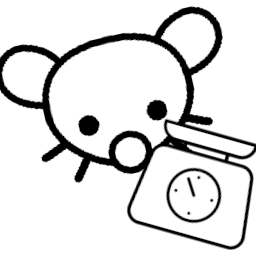If you’re a beginner at CICO, and you’ve already read our post about how it works, it’s time to learn how to determine how many calories you want to eat in a day - and how to measure how many you’re actually eating.
Determining your daily caloric intake
The amount of calories your body burns in a day varies due to many different factors. We can summarize it roughly as the sum of: the calories it takes to keep you alive (this is the minimum amount of calories you’ll burn, even if you sleep all day everyday) plus the amount of energy it takes to digest your food, and to move your muscles and pump blood in response to your exercise level.
To get a pretty good estimate of how many calories you need, you can use tools like the Mayo Clinic calorie calculator. There are calculators with more precise control over what model is being used to predict the caloric expenditure, or more realistic data about the daily fluctuations and projections of your habits - but for beginners, this pursuit of precision is not relevant and will get in the way of your goals. Ultimately, even a basic calorie counter is more than enough and will work.
If you want to lose weight, you need to take your calculated caloric intake and eat around 500 calories below it. If you want to gain weight, you need to eat around 500 calories above it. As long as this is true, your body will store or burn fat - energy can’t be destroyed or created and, therefore, it’s impossible to do CICO and not have results.
It’s important to note that if you have medical conditions that affect your metabolism, if you’re a heavy athlete, suffer from an eating disorder, diabetes or similar conditions, it’s important to consult an expert in order to calculate a good deficit or surplus for you. Be advised that no human being can eat less than around 1100 calories per day without profound medical tutoring, and you shall never eat this little just to make the process faster.
How to track calories
Determining how many calories to eat in a day is only half of the equation: you need to know how many calories you eat in a day. In order to reliably and effectively do that, you’ll need two tools: a kitchen scale and a calorie tracking app, like MyFitnessPal, FatSecret, Lose It! and alternatives.
For each food you eat, measure the exact weight and log it in your favorite app. Include everything - little snacks, the tablespoon of olive oil you added to your salad, the candybar you had after coffee, and so on. This might be tedious at first, but it quickly becomes a mindless habit and you’ll get familiar with your serving sizes and average weights, so you can eventually skip measuring certain ingredients. Volumetric measurements (one tablespoon, one cup, one bottle) can be used if weight is unavailable, but they’re less precise.
Apps can read the barcode of your packaged foods and automatically add a serving, making things easier. If you’re cooking your own food, a good recommendation is measuring your raw ingredients - the final weight on the plate will change due to water evaporating or being absorbed, but the number of calories doesn’t change, making measurements easier when ingredients are raw.

